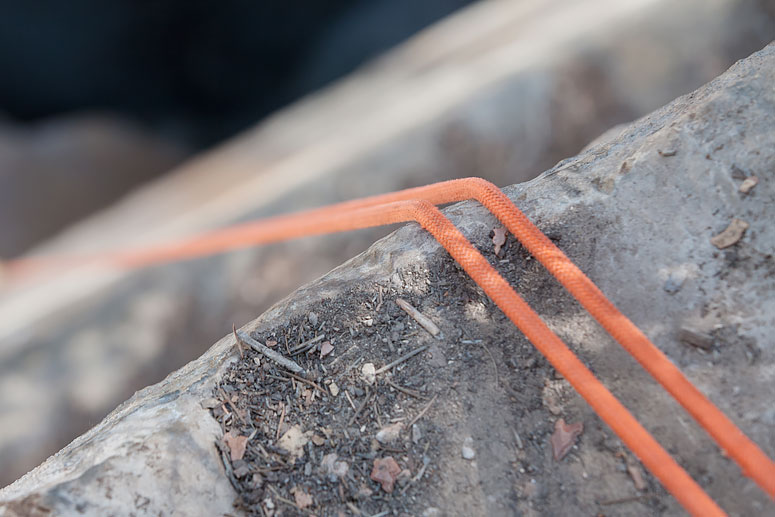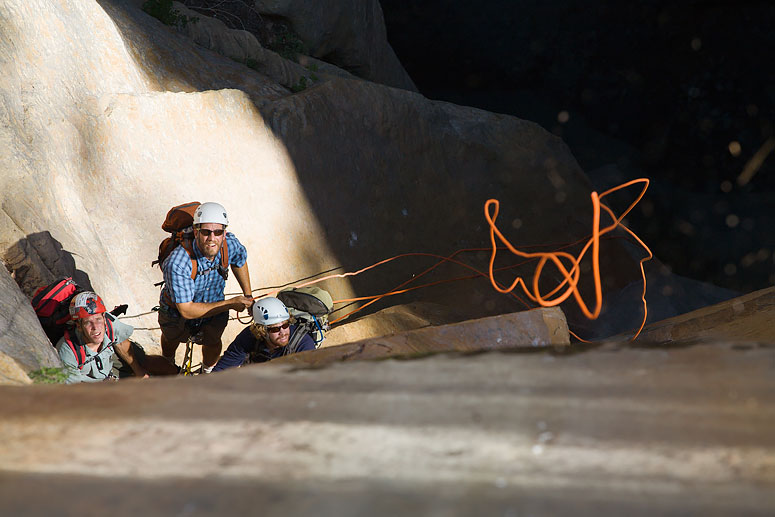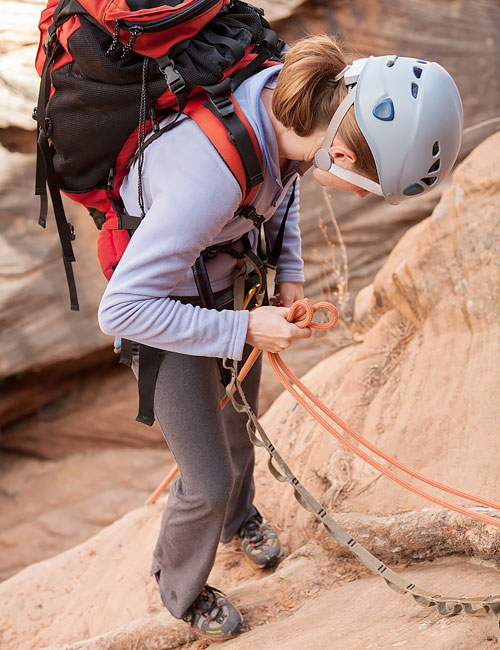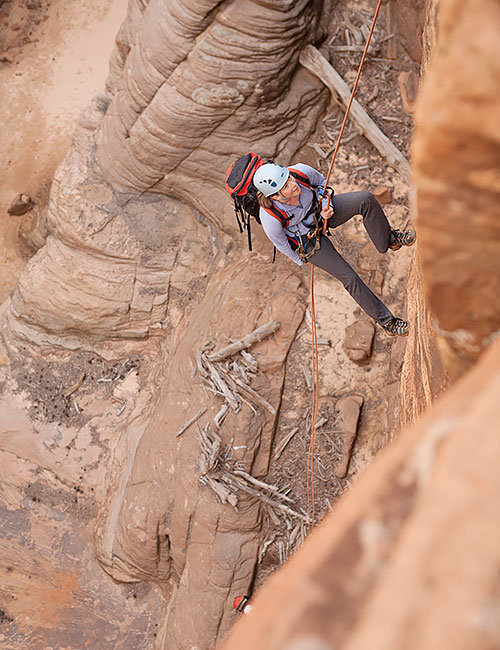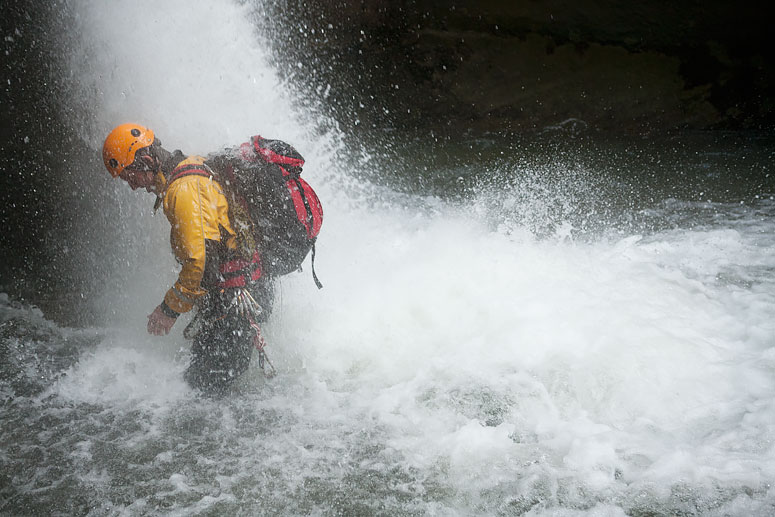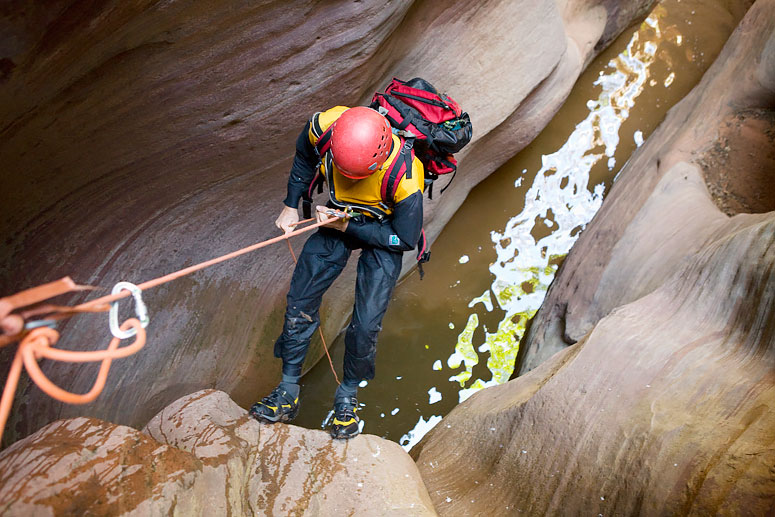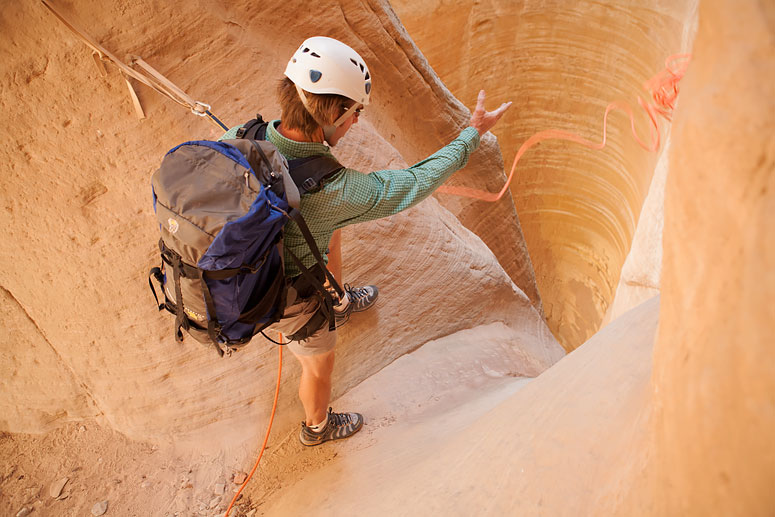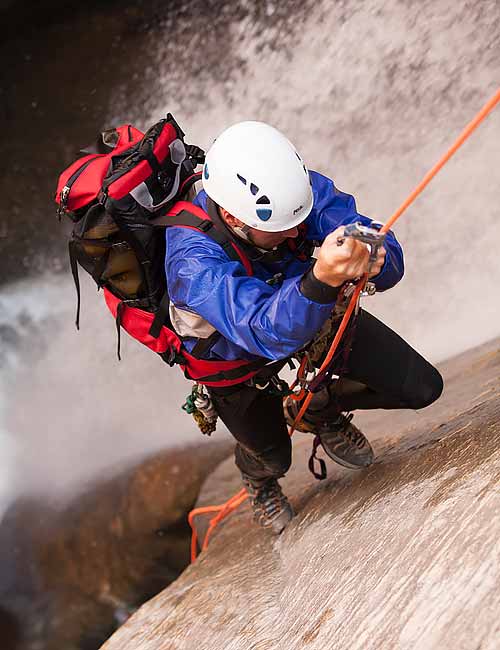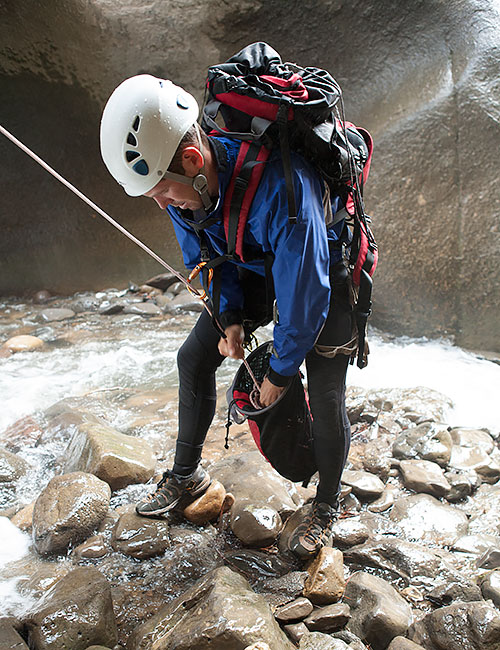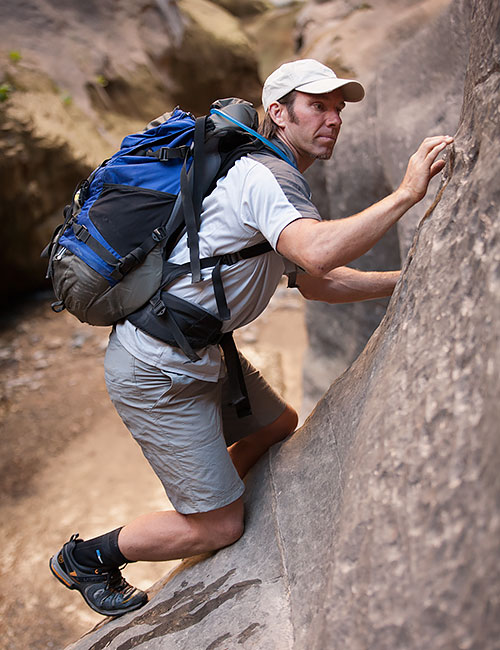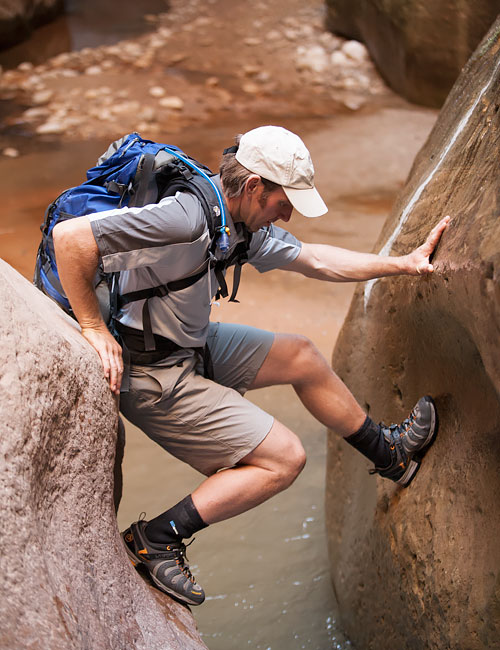The rope is your friend. Canyoneering ropes actually take abuse quite well, however, all possible precautions should be taken to minimize damage and protect the rope. (Photo) Englestead Canyon 1st rappel.
If your rope is stuck and you need it to get out of the canyon, ascending back up the rope becomes one of your options. Setting up clean rappels and understanding what can cause a stuck rope will help to avoid this scenario in the first place, but in certain situations it can be the best option. If you only have one end of the stuck rope and do not know what is anchoring the rope DO NOT ascend the rope.



